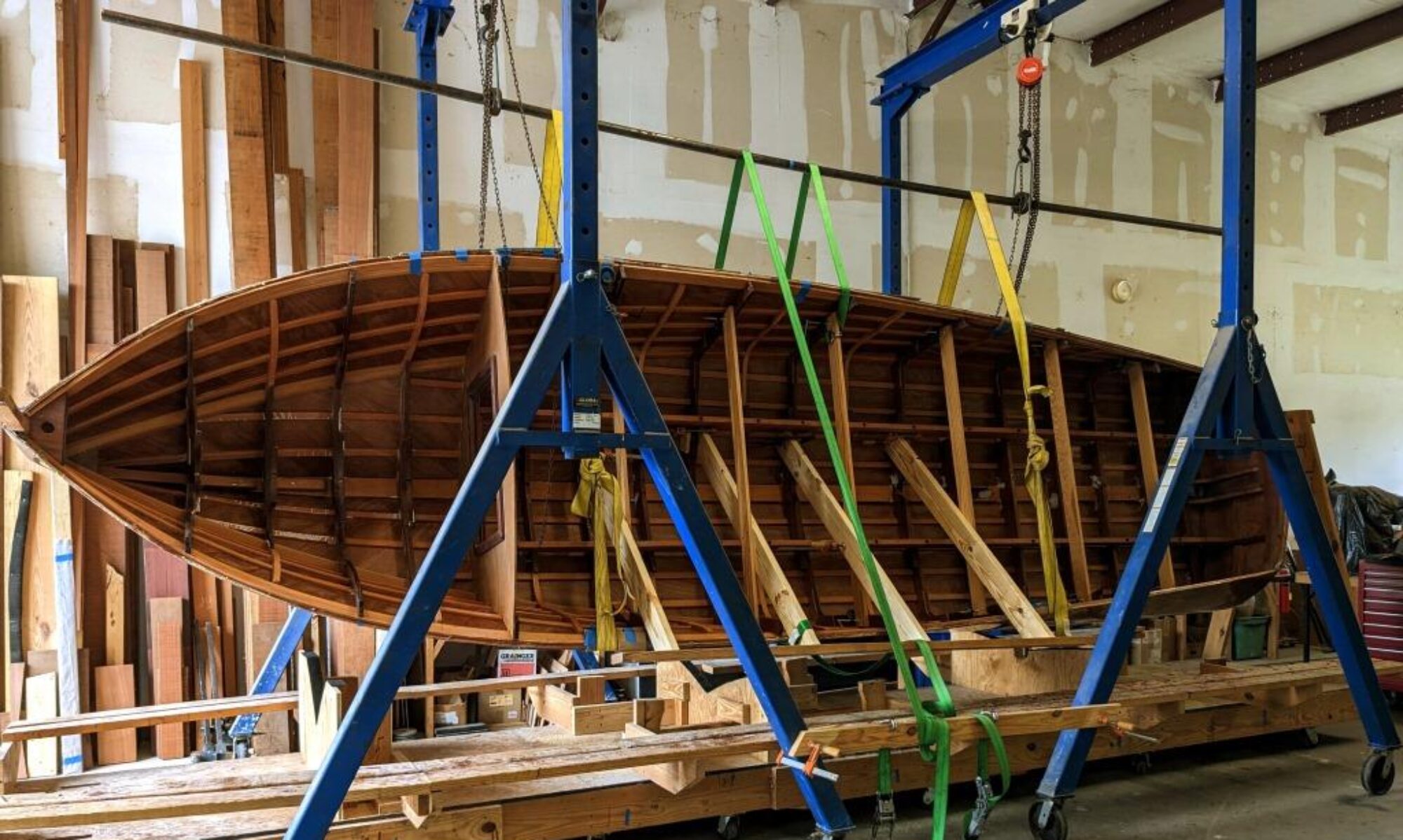
Having settled on the option of hand laying the deck, it was time to start milling wood. Take a look back at the first post in this series, Working on the Riva Foredeck. Look closely at the picture of the overall deck. See how the pinstripe holly lines are symmetrical about the centerline, and how they line up fore and aft from the outboard panels to the center panels? That’s what is going to make this a beautiful deck.

The only way to get that right is to have the holly strips and the mahogany strips milled out to precisely uniform width and thickness. Normally a table saw, jointer, and parallel thickness planer accomplish this within tolerable limits. But in order to be certain, I sanded the strips to final dimensions using a friend’s drum sander.
Next, I began laying up the center panels. They’re the smallest and most straightforward. I knew I’d be learning and refining the process as I go, so it makes sense to start with the easiest part. Once I had them complete and glued up, I could use them to make sure my other pieces would line up like I wanted.
Veneer makers use a special tape to hold the pieces together during layup, which can be sanded off once the veneer is glued to its backing board. I used packing tape for a couple of reasons. I always have it in the shop because epoxy doesn’t stick to it. And it stretches just a wee bit so you keep the joints tight.

Once the layup was finished, the next step is to glue the strips to the 1/8″ marine plywood backing. I did this using vacuum bags to ensure there were no voids and the pieces were of consistent thickness. Once the glue cured, it was a simple matter to pull the packing tape loose before sanding and cleaning up.

Next week we’ll get into the nitty gritty of using the patterns to trim the deck pieces to size. Until then, fair winds!

impressive!